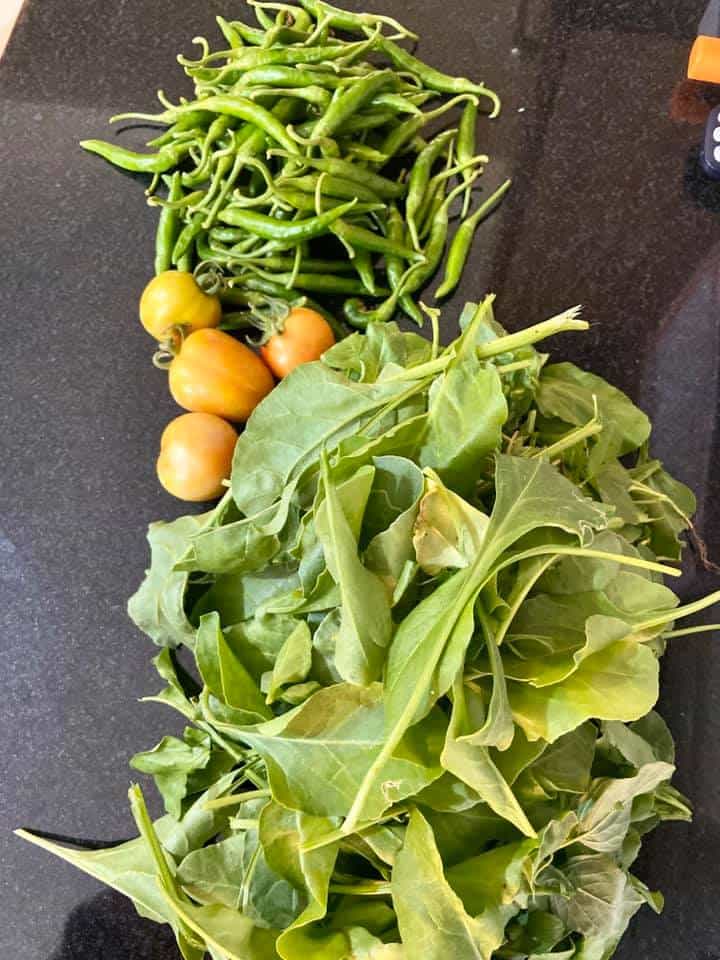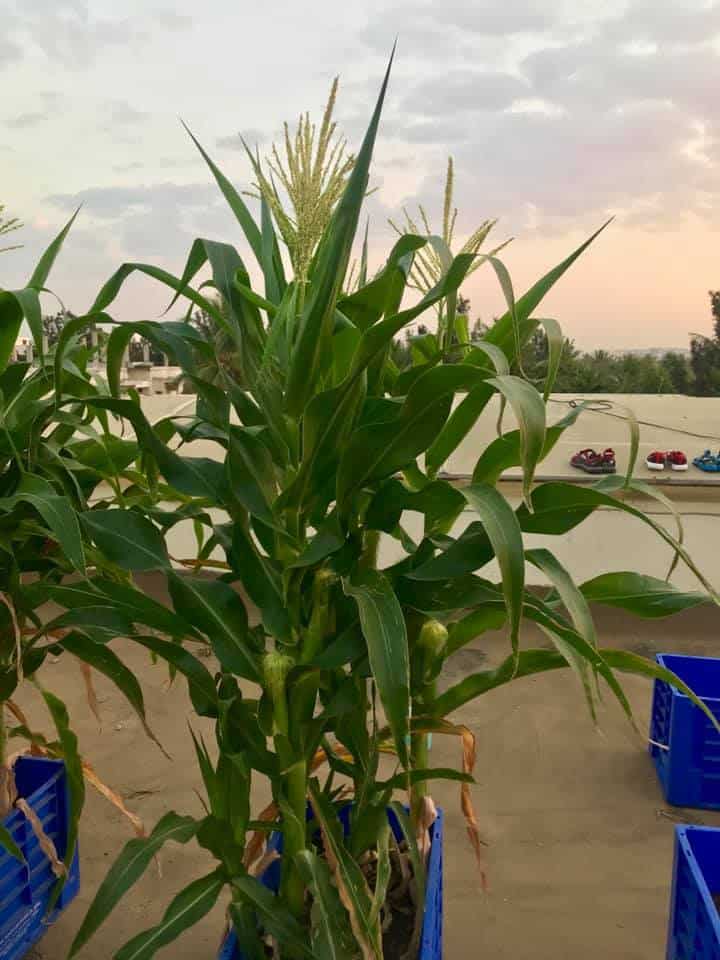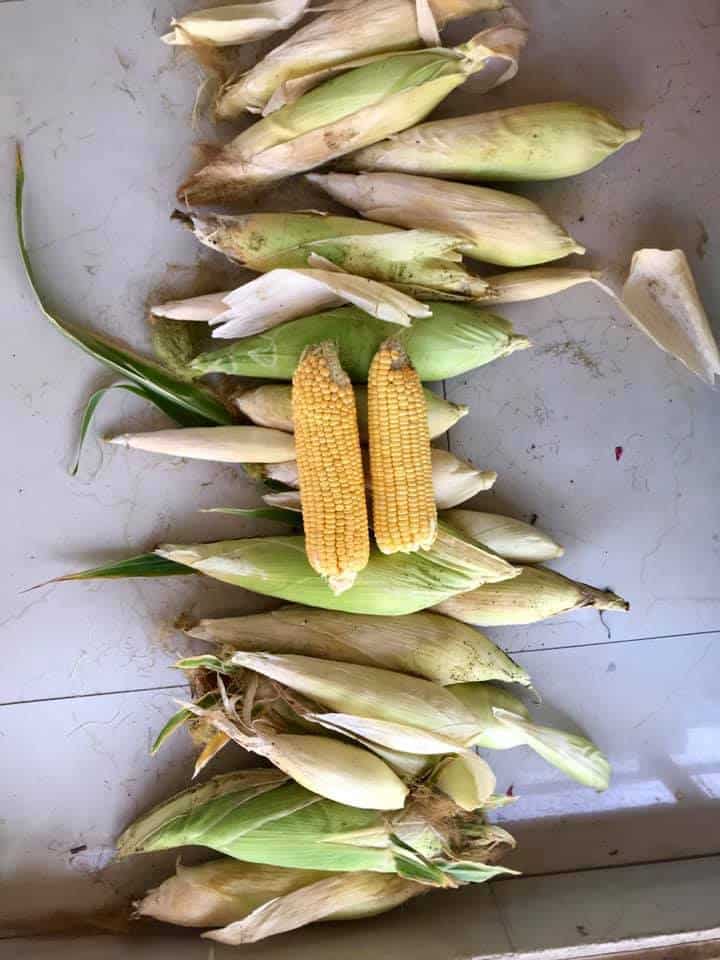Bengaluru has been steadily growing vertically with more and more highrise apartment complexes being constructed. Gardening enthusiasts lament the loss of green cover and space for growing their own flowers and vegetables. But green-thumbed residents of Ittina Anai apartment at Bellandur have shown that they can create their own paradise on their terrace. Apartment resident Aditya Rao, who is part of this terrace garden initiative, shares their story.
Having grown up on a farm with lots of trees and abundant vegetable patches, apartment living was an adjustment. Whilst I craved to recreate our childhood experiences of living amongst greenery, space was a challenge. Our apartment complex is built over 1.87 acres, which houses 72 flats in four towers. So we ended up setting up a garden on the terrace.
What started as an initiative of one family has today grown into a community initiative where five families have terrace gardens on the rooftop. We grow vegetables and fruits including Beans, Radish, Beetroot, Potato, Carrot, Cauliflower, Peanut, Tomato, Yam, Ginger, Garlic, Onion, Celery, Mint, Coriander, Spinach, Amaranthus, Corn, Brinjal, Chilli, Capsicum, Basil, different type of Gourds, Peas, Lilies, Moringa, and Papaya.

Read more: How a Bengaluru apartment created a ‘food forest’
How to setup a terrace garden
Step 1: Identifying location for the garden
Apart from the driveways, there are very few open spaces in our apartment. In addition to a small 2000 sq ft of space on the ground floor, we have a large space of 42000 sq ft of terrace space. This was ideal for growing plants in pots, and we got the approval of the apartment association.
Step 2: Identification of plants
Care was taken to identify seasonal crops. Here is a list of vegetables we have harvested over a period of three and half years:
| Vegetables | Sowing season | Life span |
| Beans, Gourds, Ladies Finger, Tomatoes, Potatoes, Coriander, Mint, Basil, Curry Leaves, Brinjals, Garlic, Ginger, Chillies, and a few other all season crops | Throughout the year using crop rotation techniques to regenerate the soil | 6 months to a year |
| Cauliflower, Corn, Cabbage, Radish – Mooli, Radish English, Beetroot, Sweet potato, Capsicum and other winter vegetables | Post the rains and they are harvested from October to February | 4-6 Months |
| Green leafy vegetables: Palak, Amaranthus – Green & Red, Dill, Fenugreek, Mustard | Sow every two months all year around | 2 months |
*On an average, a large pot yields around 4-6 kilos of vegetables.

Step 3: Managing cost
Our goal was to create an economically viable, sustainable garden by using the 3R method- Reduce, reuse and recycle method.
- We reused old chlorine barrels and drums as containers for the plants. This not only saved us the cost of the pots, but saved us from having to dispose of them at a cost.
- By using coco-peat we reduce the dependence on soil; as cocopeat is lighter than soil and has better water retention properties, hence it also reduces the need for frequent fertilizer use as the same is retained by the cocopeat for longer.
- Our sewage treatment plant (STP) generates 200-250 kg of sludge in a year, which has great nutritional value for growing plants. By reusing these, not only did our plants thrive, we also saved on the effort and cost of having to dispose off our STP sludge via tankers or other means for the last 3.5 years!
- We reached out to our fellow Bangalore Apartment Federation (BAF) neighbors – Rohan Jharoka (1 & 2) to procure about 1500-2000 kgs of compost from their Organic Waste Composter (OWC) every 4-6 months.
- We spend an average of 15000 per annum on cocopeat, labour, seeds and seedlings, organic fertilizers like seaweed, pesticides like neem oil, containers, etc.
- We reuse our STP treated water, via taps in the terrace, this not only reduces the wastage but also reduces the usage/cost of fresh water.
- We spend about an hour or so each day in the mornings tending to the garden. We also employ a part-time gardener.
Read more: Bengaluru home gardeners find their mojo during the pandemic
The benefits of a terrace garden
The garden layer has helped cool down the building. The upper floors of the apartment have experienced a drop in summer temperature by 3-5 degree Celsius.
The garden has been a source of fresh organic food! By using natural methods of pest control such as; Neem oil spray and letting the birds and honey bees that have started frequenting the terrace garden take care of most pests and bugs, we have a clean, green buzzing garden! We barter the produce amongst fellow terrace gardeners, sell to fellow residents, donate to our Staff and share with our friends and relatives who visit us!

We have not only built a community garden within Ittina Annai, we expanded our circle to other fellow Bangalore Apartment Federation (BAF) Cluster members in our locality by utilising their excess compost and re-using our own STP sludge to fuel the same. Our terrace garden is 100% organic!!
Tips :
- Getting started is the major hurdle. Once you start, there are lots of resources which are available online and via the State Horticulture Department.
- Ensure the terrace has adequately been waterproofed to avoid any leakage.
- Care should always be taken to keep the place clean and free from any debris, soil and leaves by sweeping the terrace at least once a day, so that rainwater harvesting is not impacted.
We are currently experimenting with perennial fruit bearing trees like: Guava, Lime, Orange, Pomegranate to name a few and the results will take two years to yield.

You can set up a terrace garden too!
As a community, we are very proud of our garden as it gives us exercise and exposure to sunlight, besides providing the satisfaction of doing something unique and enjoying the fruits of one’s labour.
You too can set up a terrace garden. All it takes is some old containers, coco peat, compost, STP sludge and some time and elbow grease!
Very good article on the commendable effort of Mr. Aditya Rao in restoring our environment!
Congratulations to him and thanks to Citizen Matters!
Congrats Aditya
?????
Awesome performance by Audiya Rao and his Ittina Apartment residents.
Audiya Rao is a mutistidiamentional personality and in one line ” Out of Box Thinker”. Know him personally thanks to our mutual BAF connection.
A man of great integrity and character. Wish him and his startup Greentivity which has already good number of committed clients.
Congratulations Baba